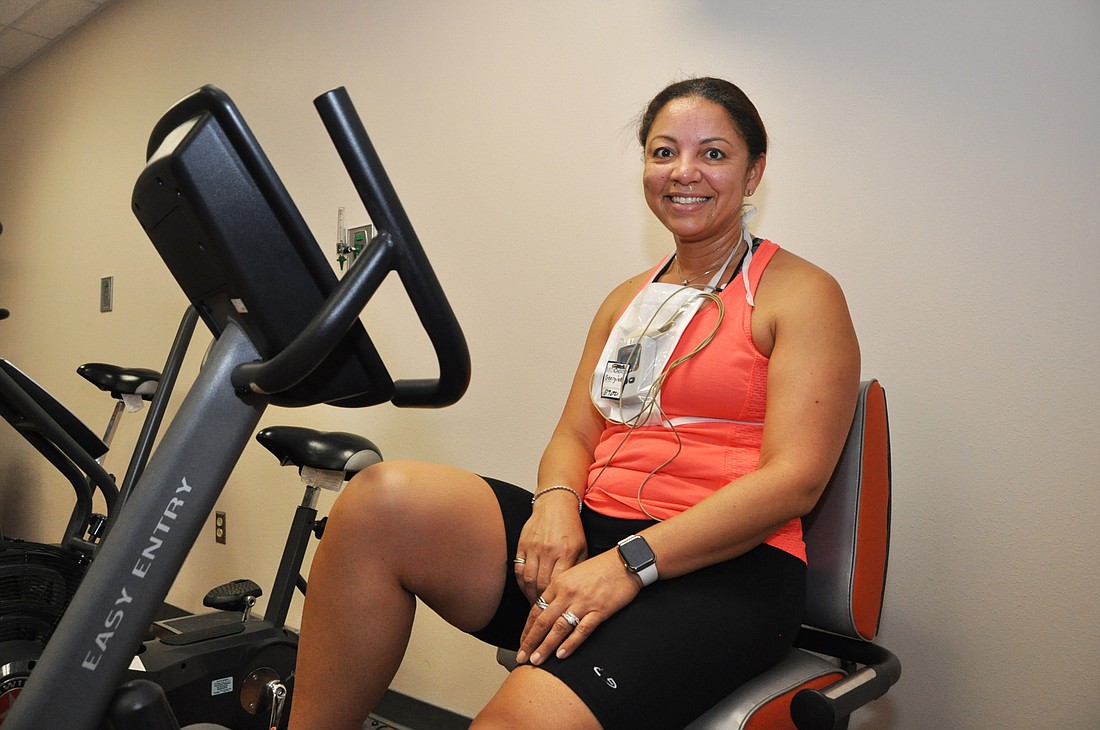- April 25, 2024
-
-
Loading

Loading

In the midst of her recovery following a mitral valve replacement surgery, Windermere resident Georgine Lamvu acknowledged it was surgeons and cardiologists who saved her heart — but it was the cardiac rehabilitation nurses who saved her life.
Lamvu is one of several patients in cardiac rehab at Orlando Health — Health Central Hospital in Ocoee — and it’s made all the difference in her recovery, she said.
“Most people don’t realize that, after you’ve had open-heart surgery, that’s just half of the battle,” Lamvu said. “Doing that cardiac rehab is the most important thing actually in your survival.”
Health Central is one of many hospitals across the county recognizing that critical field during Cardiac Rehabilitation Week, Feb. 9 through 15.
According to the American Association of Cardiovascular and Pulmonary Rehabilitation, the purpose of the week is to thank those who work in the field and raise awareness about the role cardiac rehabilitation plays when combating heart disease.
Lamvu had her heart surgery in October to deal with her bacterial endocarditis — an infection of the lining of the heart and heart valves. After five weeks of healing, she began cardiac rehabilitation, visiting the hospital throughout the week to exercise in a workout room.
“They monitor your weight, and if you’re a diabetic, they monitor your blood sugar,” Lamvu said. “You have 36 sessions to build a healthy habit through cardiac rehab and to learn how to be healthier, so it’s not just about recovering your heart. It’s really changing your lifestyle.”
GET PUMPED UP
Jim James, a registered nurse in the cardiac rehab department at Health Central, works with Lamvu and other patients undergoing rehab on a daily basis.
In the rehabilitation program, patients exercise while hooked up to a heart monitor. An electrocardiogram allows James to ensure patients aren’t working too hard but still are challenging themselves enough to strengthen their hearts.
“We do their blood pressures throughout the time that they’re exercising and we put them on different machines based on what they need,” James said. “Some patients can’t walk on a treadmill, so we use other equipment because they’re just too unsteady on their feet. … We individualize all the treatment to each individual patient.”
From patients who recently suffered a heart attack to patients who have had a valve replaced, everyone has his or her own pace and flow during rehabilitation, James said. A patient who suffered a heart attack or had a stent put in typically will be in the program for three to four months. The rehabilitation process following a valve replacement surgery takes about four to six weeks — after a period where the chest incision heals. A bypass surgery takes about three to four months of rehabilitation.
“If you sprain your ankle, you’re not going to go out the next day and start running again — you’re going to give it time to heal,” James said. “Even when you do (run), you’re going to kind of walk on it gingerly at the beginning, and as it starts to get a little bit better, you walk a little faster, and then finally you maybe trot on it a little bit. Eventually, down the road, you get back to running. It’s the same thing with the heart. If you’ve had a heart attack, it’s stunned — it needs time to recover.”
The process of monitoring heart rates, though, is a part of what makes cardiac rehab different from any other kind of rehabilitation, James said.
“The difference is you can feel how your legs and arms feel, so you know whether or not you’ve done too much or you can keep going,” James said. “You have no way of knowing about your heart as to whether or not you’re pushing it too hard or not hard enough.”
Patients don’t have to wait for a heart-related incident or surgery to take advantage of the workout room. Any patient with a history of high blood pressure or similar issues can visit and exercise with nurses nearby.
“We have what’s called ‘phase three cardiac rehab,’” James said. “It’s a non-monitored exercise program. We do their blood pressure and their heart rate before they start, and we do it after they’re done to make sure everything’s all right, but they still come in to exercise, and we still guide them along.”